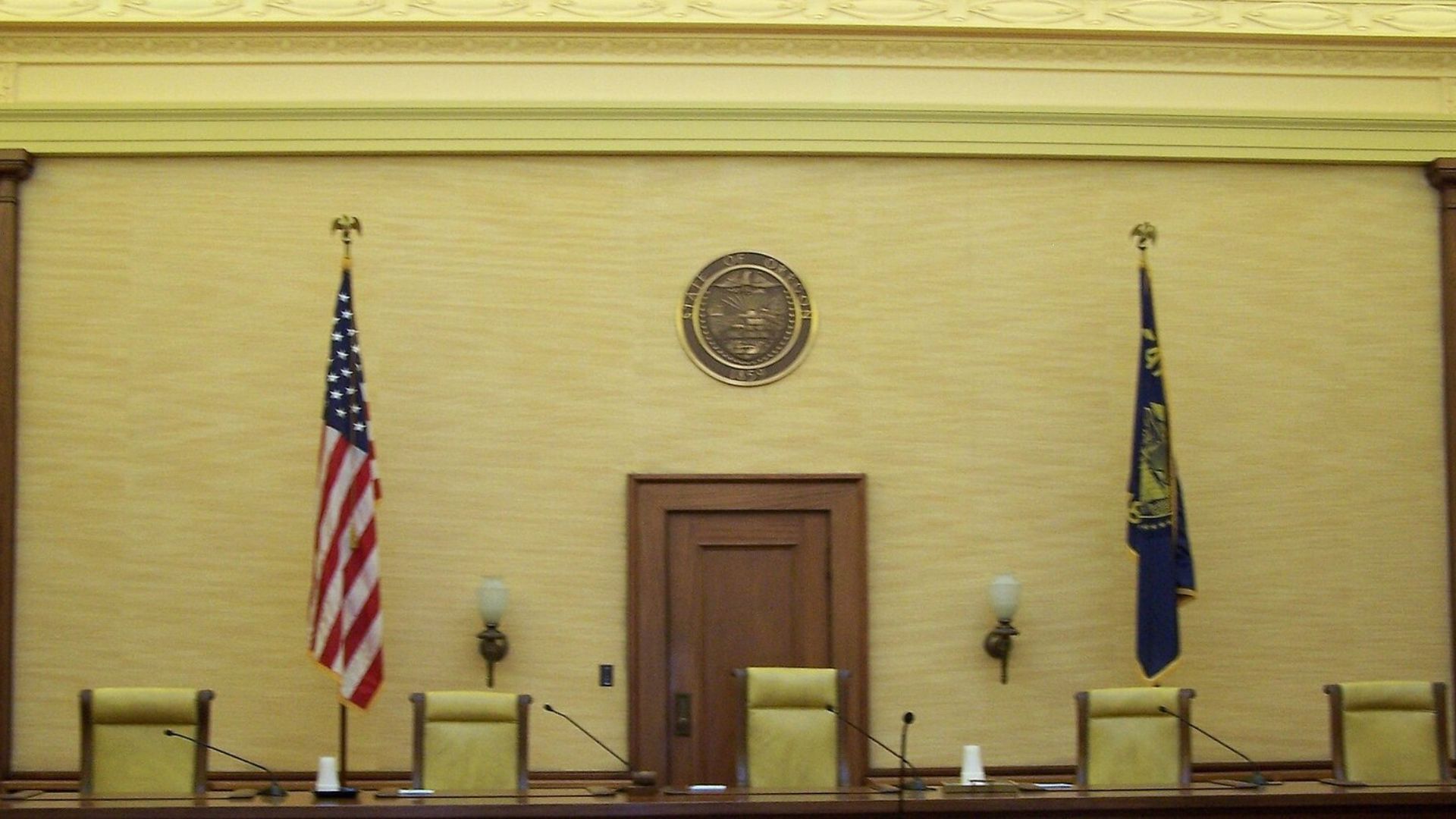The Oregon Court of Appeals threw a curveball by rejecting a move to dismiss an appeal against a local judge’s decision.
The controversy began when a Harney County judge declared the voter-backed Measure 114 unconstitutional, setting off a fierce debate over the state’s constitution.
Toughest Gun Law in the Nation

The Oregon gun laws are among the toughest in the US. It was also among the first to be passed as the Supreme Court changed the guidance for judges to follow in Second Amendment cases.
While Americans across the US have the right to own, sell, and buy firearms, some states are trying to change the way this is handled, with Oregon being one of them.
Gun Owners Appealed the Ban

Even though voters narrowly voted for the ban, there was still a large proportion of people, mostly gun owners, who opposed the ban and went to the court to try and appeal it.
This is why the back-and-forth has kept happening: There are people who are clearly against these measures and others who are all for them, with the US Constitution playing a key part.
Legal Delays and Rigorous Scrutiny

A bit of drama unfolded as the state scrambled to submit its opening brief late due to necessary corrections in the trial transcript.
Accepted by the appellate court, this development highlights the intricate dance of legal deadlines and meticulous documentation.
Countdown for Gun Owners

Gun owners fighting against Measure 114 are racing against the clock, with a deadline of July 26 to respond.
This adds another layer to Oregon’s ongoing struggle with gun control legislation, emphasizing the detailed procedural battles that accompany such legal disputes.
Clash Over Constitutional Interpretation

State attorneys are pushing back hard, arguing that Harney County Circuit Judge Robert S. Raschio got it wrong when he claimed the gun control law turned “legal standards on their head.”
They contend that the law aligns perfectly with existing legal precedents and should stand.
The Oregon Constitution

The US Constitution and the Oregon Constitution are involved here. This states that Oregon’s citizens “shall have the right to bear arms for the defense of themselves.”
This was where many issues arose as the Constitution clearly states they have the right to bear arms, whereas the state was trying to go against this in some ways.
The Details of Measure 114

With a slim approval rate of 50.7% in November 2022, Measure 114 introduced stringent rules on gun ownership, including magazine capacity limits and mandatory permits for buying guns.
It also aimed to tighten loopholes in background checks, sparking a statewide conversation on gun safety.
Those Who Would Be Exempt From the Measure

There are a few people who would be exempt from the measure should it ever come into law.
These are law enforcement officials, military members, or people who owned any of the banned items before the measure was enacted.
Legal Roadblocks and Intense Trial

Two gun owners from Harney County managed to halt Measure 114 with an emergency injunction just days before its implementation.
What followed was a tense six-day trial dissecting the measure’s key elements, such as permit requirements and magazine restrictions.
Judicial Disapproval on Public Safety Claims

Judge Raschio’s verdict was clear: he believed Measure 114’s key components breached the Oregon Constitution.
He pointedly noted, “the state failed to show either provision would promote public safety,” spotlighting the absence of compelling evidence that the law would enhance safety.
Another Judge Said the Ban Is Constitutional

Despite this finding, another judge, US District Judge Karin Immergut, has ruled that Measure 114 is constitutional.
He said that banning large-capacity magazines and needing a permit to purchase a firearm is perfectly in keeping with using weapons and firearms to protect public safety.
Immergut’s Ruling

Immergut’s ruling stated that large-capacity magazines aren’t typically used for self-defense and are, therefore, not protected by the Second Amendment.
He also pointed out that the Second Amendment only allows law-abiding and responsible citizens to own firearms. The measure was not trying to take away either of these but only to enhance them.
Controversy Over Key Evidence

In court, Assistant Attorney General Robert A. Koch lambasted the omission of a detailed report on the 2017 Las Vegas massacre, which he felt was crucial in understanding the dangers of large-capacity magazines.
Koch argued that overlooking this evidence ignored the very threats Measure 114 aimed to mitigate.
No Convincing Evidence

One of the judges’ issues with the state of Oregon’s arguments was that they didn’t provide any convincing evidence in favor of Measure 114.
The state was claiming that they had evidence that showed how the guns they wanted to ban posed a dangerous threat to the public. However, Raschio wasn’t convinced.
Debating the Necessity of Firepower

During the proceedings, evidence presented by the state showed that self-defense situations typically involved no more than 2.3 rounds fired.
This challenges the need for high-capacity magazines that were used in various mass shooting incidents.
The Second Amendment Preservation Act

Other states are also having issues with the Second Amendment and what counts as unconstitutional versus what doesn’t. Missouri enacted the Second Amendment Preservation Act.
It prevents local law enforcement officials from enforcing unconstitutional firearm laws and limits who can buy and sell firearms.
Maryland’s Assault Weapon Ban

After a school shooting in 2012, Maryland enacted a ban on assault weapons. The law made it a crime to possess, sell, transfer, or purchase an assault long gun, which puts 45 specific weapons and their analogs under the law.
However, over a decade after the ban became law, an appeal was made to the Supreme Court to reverse it. The appeal was thrown out of court, and the ban remains in place for the time being.
Broad Support for the State’s Stance

Diverse groups including Lift Every Voice Oregon and Ceasefire Oregon have shown their support for the state’s position by contributing amicus briefs.
This collective backing demonstrates the widespread interest and varying viewpoints on the implications of Measure 114.
Legal Concerns Over Bias and Fairness

Throughout the trial, Judge Raschio probed the potential for racial bias in enforcing the new regulations, posing scenarios that might lead to different treatments based on race.
This critical line of questioning sheds light on the broader issues of fairness and equality in law enforcement.
Advocacy Groups Push for Reevaluation

Numerous organizations like the Brady Center and Giffords Law Center are advocating for a reexamination of Measure 114’s constitutionality.
Their united front amplifies the ongoing national discussion about finding the right balance between upholding gun rights and ensuring public safety within the legal framework.
Raschio’s Decision Is Permanent

In the first ruling of this case, he blocked the implementation of the measure in the trial that occurred in 2022.
However, by the 2023 trial, his stance had somewhat changed. Raschio has made it clear that he is blocking the implementation of the measure, but this time he is making that blocking permanent.
The State Is Appealing the Decision

Unhappy with the decision, the state of Oregon is appealing the decision in another attempt to try and get Measure 114 put into law.
The state believes that people will die if something isn’t done about the decision made by the judge. However, as the measure has been branded unconstitutional, it’s looking unlikely that anything will change.
Could the Supreme Court Overhaul the Second Amendment?

According to Democrat Senator Chris Murphy, the Supreme Court could rewrite the Second Amendment. However, this is currently just a claim and isn’t necessarily going to happen.
Murphy is also claiming that should this happen, Congress could take away the requirement for people to go through background checks before purchasing and owning firearms.
